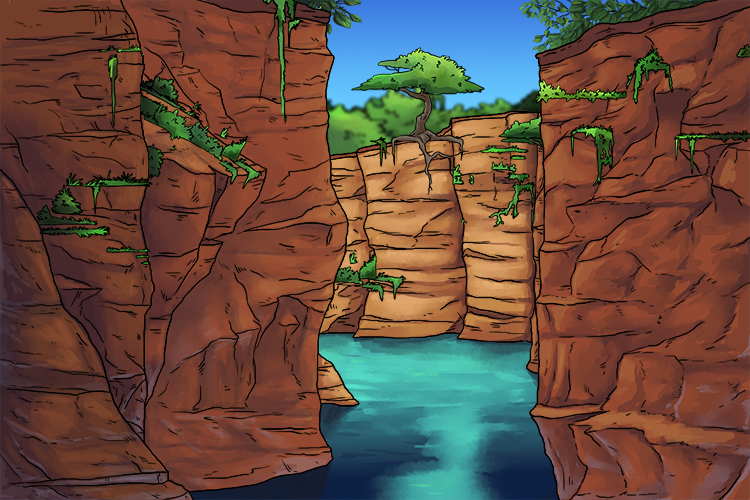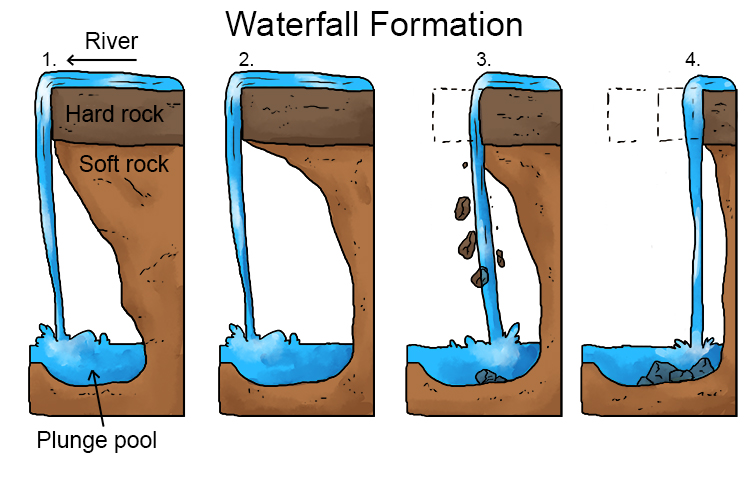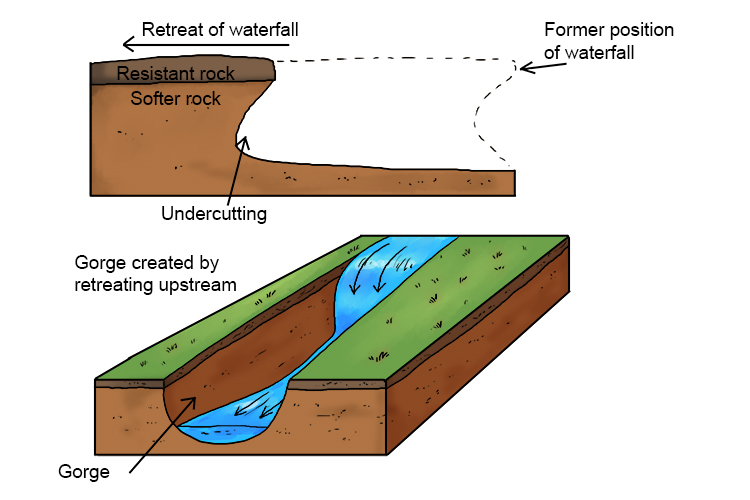Gorge – A narrow, steep sided valley, sometimes formed as a waterfall retreats upstream
To remember the meaning of the term Gorge, use the following mnemonic:
What a gorgeous view (gorge) of a narrow, steep-sided valley. Often with a waterfall at the end.

So, how are gorges formed?

- Waterfalls typically form in the upper stages of a river. They occur when a band of hard rock overlies a softer rock. Falling water and rock particles erode the soft rock below the waterfall, creating a plunge pool.
- The soft rock is undercut by erosional processes such as hydraulic action and abrasion, creating a plunge pool where water and debris swirl around, eroding the rock and creating an overhang.
- The hard rock overhang above the plunge pool collapses as its weight is no longer supported.
- Erosion continues and the waterfall retreats upstream, leaving behind a gorge.

Note: Gorges can also form when meltwater floods flow after numerous cold periods or "ice ages", or by cavern collapse abrasion.
A gorge is a narrow valley with steep, rocky walls. Gorges are usually smaller than canyons, although both words are used to describe deep, narrow valleys with a stream or river running along the bottom.
Apart from retreating waterfalls, gorges can also be formed by other natural actions, including the movement and melting of glaciers, the collapse of caverns or caves, geologic uplift (the elevation of earth's surface due to natural causes) and rivers and streams simply 'carving' through layers of rock over millions of years.
Important geological discoveries have been made at gorges because they expose layers of rock that go back millions of years. For instance, the Olduvai Gorge in Tanzania has layers dating as far back as two million years and is famous for the fossils and ancient tools found there.




